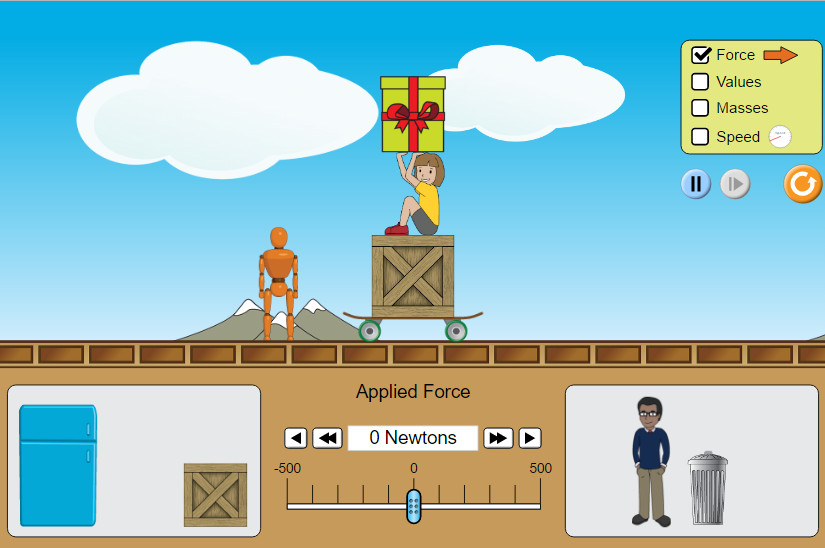 Forces and motion are all around us. You might even say they make the world go ’round. In 1687 Isaac Newton attempted to explain the movements of everything in the universe—from a pea rolling on a plate to the position of the planets. It’s staggering to think about how much of our daily life involves some aspect of Newton’s Laws of Motion.
Forces and motion are all around us. You might even say they make the world go ’round. In 1687 Isaac Newton attempted to explain the movements of everything in the universe—from a pea rolling on a plate to the position of the planets. It’s staggering to think about how much of our daily life involves some aspect of Newton’s Laws of Motion.
This is one science topic that can be easily approached by using examples from our collective life experiences. Starting a discussion about forces and motion with your students is easy. All you have to do is drop a feather… nudge a toy car forward… pull open a door.
We’ve put together a collection of interesting topics and interactive games that you can use to get a conversation going with your students. Let us know what you think in the comments below!
A Simple Start…
Newton’s Second Law of Motion states that if you wish to move something, you must apply a force to it. Newton’s First Law of Motion states that once an object is moving, it will remain moving (unless friction or another outside force, like a wall, acts on it).
This interactive game introduces both laws in a delightfully simple way. Young students can launch a car on a customizable track lined with smooth vinyl, rough wood, plush carpet, or glistening ice. Which surface makes the car go farthest? Fastest? An excellent way to start a discussion on how an object’s speed can vary based on the amount of friction it encounters.
Force, Motion, Friction and Acceleration Games
Explore the forces at work when pulling against a cart… or pushing a refrigerator, a crate, or a person. Students can easily experiment with the amount of applied force they exert. Change friction and see how it affects the motion of objects. This wonderful simulation game also includes a full lesson (complete with worksheets and a graphic organizer).
Newton’s Laws and Car Crashes
Newton’s Laws certainly apply to car crashes. We found this article about car seat belts and Newton’s Laws, written by an emergency room nurse, to be very informative—both in terms of science and safety!
If class time permits (and you don’t mind a bit of a mess), why not have students create a safety device to protect an egg “passenger” in a car crash? Click here for “Speed, Eggs and SLAM!” instructions.
 You might also want to have students make public service announcement posters that will persuade people to wear seat belts. Their posters should include:
You might also want to have students make public service announcement posters that will persuade people to wear seat belts. Their posters should include:
- A simple explanation of Newton’s Laws of Motion
- A compelling argument in favor of wearing a seat belt
- A drawing that illustrates Newton’s First Law in a car crash (label what items/people are a rest and which items/people are in motion)
How are Newton’s Three Laws of Motion Used in Sports?
Sports are an excellent theme to open a discussion on Newton’s Laws of Motion. After all, a hockey puck wouldn’t glide across the ice without these physical principles, and a bowling ball wouldn’t knock down any pins if it weren’t for forces and motion.
Ask your students to think of their favorite sport and explain how Newton’s Laws applies to it. Here’s a wonderful site for background information.
If you have any hockey fans in your class, point them to this collection of videos on the Science of NHL Hockey!
Forces and Motion on the Baseball Diamond
Why not use baseball to explain forces and motion? When a player hits a baseball, the distance it travels is affected by the ball’s speed and angle, plus the amount of air resistance it encounters. If the ball is hit too low, it quickly returns to Earth; if it’s hit too high, it will travel a long vertical distance but may not go very far horizontally. Can your students find the “sweet spot” where horizontal travel is greatest? Can they find the best angle? This game also allows players to change the air resistance by choosing a different stadium location.



